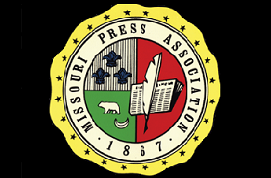 After graduating from the Missouri School of Journalism in 1984 to pursue a career in newspapers, alumna Connie Farrow never imagined she’d be returning to campus in 2012 to help newspapers in a slightly different role.
After graduating from the Missouri School of Journalism in 1984 to pursue a career in newspapers, alumna Connie Farrow never imagined she’d be returning to campus in 2012 to help newspapers in a slightly different role.
Missouri-based American Newspaper Digital Access Corporation (ANDAC) wants to help newspapers take advantage of technology to harness the value of their online content before they lose it to pirates who try to resell it.
To help test its business model, ANDAC Chairman Andy Waters recruited Farrow as their project manager to aggregate newspaper content of all types — create new products based on that content — and return value back to the newspapers in support of journalism. She’ll spend this academic year developing and testing the concept as a 2012-2013 Reynolds Fellow at the Donald W. Reynolds Journalism Institute at the Missouri School of Journalism.
ANDAC is made up of a handful of newspaper publishers and state press associations
from Missouri, Kansas and Iowa. They joined together to address industry issues created
by changing technology. Among them: third-party vendors are capturing news content
and reselling it as archival material for their own profit; tear sheets continue to cause a
bottleneck in the smooth transition of advertising publishing; and governments are
looking to pull public notice advertising from newspapers and publish them instead on
government-controlled websites.
Farrow is focusing her fellowship on public notices. Her goal is to create a central
database for all of the public notices published in newspapers across the state of
Missouri.
If the project is successful, the hope is to expand the service to the rest of the country.
Threat to public notices
Traditionally and statutorily, newspapers have been the distribution center for public
notice advertising providing “vital information to the public” through an independent and
verified publication. However, bills in numerous state legislatures, including Missouri,
have threatened the future of this independent, verified advertising source.
Threats have been made to move public notices to government-controlled websites.
Doing this would hurt more than newspaper revenue, said Farrow.
“The purpose of public notices is to provide transparency and accessibility to citizens
about the inner workings of their government, so they can exercise their constitutional
right to be heard. Newspapers are the best source for public notice delivery because they
serve as independent watchdogs for fraud and incompetence by government and private
interests,” she said. “Publishing public notices in newspapers also ensures that they will
be audited and verified that they meet statutory rules, and archived in one easily
accessible location.”
Newspapers and press associations have fought back, but the threat remains.
In response, press associations have created their own websites where public notices can
be published after they are printed in the newspaper. However, this has its limitations, she
said.
“The problem is there is no single vendor who is converting all of this content into a
standard machine-readable format that can be quickly, consistently and affordably
repurposed,” she said.
Also, there is no single vendor who is “aggregating” content from across the U.S.
“ANDAC’s vision is that a database of content from across the United States is
exponentially more valuable than content on a state-by-state basis,” she said.
For example, a man in Nebraska purchases school buses and repurposes them. He has to
go to each state and sort through all of the legal notices to determine which school
districts are having sales — a time consuming process, said Farrow.
Farrow is interested in determining if the man could go to a website, sign up to get email
notices any time a school district, from a defined area, is going to have a sale.
“It would be of value to a lot of different entities to be able to collect information from
one source,” she said.
Farrow owns her own public relations, media training and advocacy business — Farrow
Communications LLC — and understands the importance of being able to streamline
work, especially for small business owners.
However, she said her passion for newspaper journalism is one of the reasons she chose
to take on this project and she’s excited to see if it can work. Farrow has written for The
Southeast Missourian, Sedalia Democrat, Springfield News-Leader, USA Today and The
Associated Press.
“I still have ink in my blood,” she said. “Thinking that I could have a part in creating new
revenue streams that would help make newspapers more viable is what really intrigued
me about this fellowship.”
Story by Jennifer Nelson/Donald W. Reynolds Journalism Institute
About the Donald W. Reynolds Journalism Institute
The Donald W. Reynolds Journalism Institute works with citizens, journalists and
researchers to strengthen democracy through better journalism. RJI seeks out the most
exciting new ideas, tests them with real-world experiments, uses social science research
to assess their effectiveness and delivers solutions that citizens and journalists can put to
use in their own communities.


